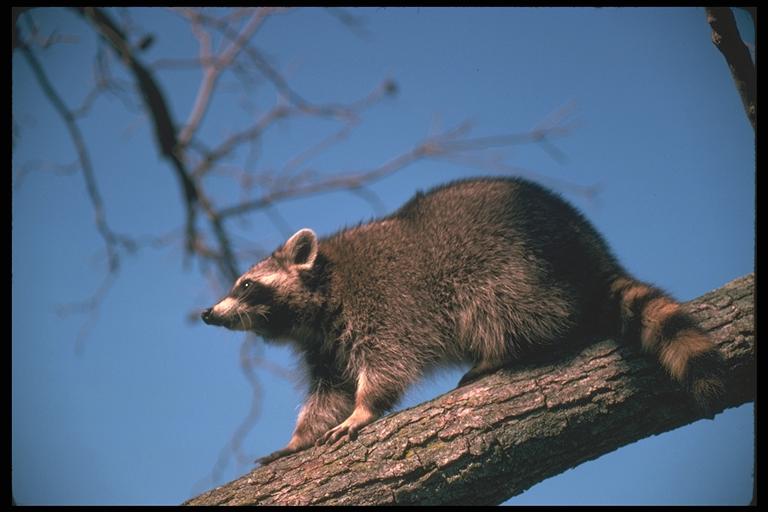
Report Date:
http://www.dfg.ca.gov/
Question: My neighbor has been feeding the stray cats in the neighborhood, and now the raccoons have been coming to eat the cat food. Recently the raccoons have been coming out during the day. There are many children in the area and I fear someone will get hurt. Many people also walk their dogs in the area. Do you have advice? (Carmen)
Answer: Unfortunately, you are in a tough situation. Your neighbor may not understand the importance of managing food sources that are attracting wildlife to your neighborhood. Depending on the relationship you have with your neighbor, you might try to explain that feeding stray cats is creating a secondary problem. Perhaps you can negotiate a feeding schedule for the cats in which the uneaten food is picked up immediately.
Although raccoons are chiefly nocturnal, their behavior is dependent on foraging opportunities, so it is not uncommon to see them out in the daylight hours if pet food and other food sources are readily available. Raccoons usually pose little danger to people and pets – unless they are harassed, cornered or with young. But raccoons can carry diseases, some of which – like rabies or raccoon roundworm (Baylisascaris procyonis) – can be transmitted to humans and pets. While such infections are not common, there have been verified cases in California. Anywhere raccoons live and defecate, the potential for disease transmission exists.
The most important step is to remove all food and garbage attractants, but you can also deter raccoons around your home by spraying them with a garden hose (referred to as hazing). Raccoons are very good climbers and have been known to take up residence in chimneys and attics, so keep trees trimmed and block off access points to your home. Secure garbage cans with bungee cords and only put garbage out on pickup day. Lock your pet doors at night and keep an eye on small pets.
Typically, nuisance raccoon situations are the responsibility of the landowner but may be handled by your local animal control office or County Agriculture Commissioner’s Office, depending on what county you live in. If animal control cannot respond directly, they might be able to refer you to a private wildlife removal service. It is highly recommended that people do not attempt to remove or trap unwanted wildlife without professional assistance. Relocating wildlife is both prohibited and pointless – it only moves the problem to another neighborhood. CDFW staff typically cannot respond to nuisance raccoon calls. However, you may contact the local CDFW office for your county if you need additional information. You can find more information and links to other resources about living with wildlife on CDFW’s website. For public health information, please visit the Center for Disease Control’s website.
Followup on Bean Clams
Question: I saw your Jan. 25 column regarding the bean clam population explosion on Newport Beach shores, and have a follow up question. My husband and I have been witnessing the masses of bean clams on the beach for over a year now, and today, as were walking upon the low-tide shoreline, we noticed that all of a sudden, many of them were opened up. This happened overnight. What made them die so suddenly? (Jeannine)
Answer: It’s impossible to be sure from a photo alone, but it’s likely that either the bean clams (Donax gouldii) recently spawned or an infectious agent was to blame.
Microscopic examination of the tissues could perhaps further detect whether the gonad shows signs of recent release of gametes for spawning or whether there are active infections from bacteria, viruses or parasites, such as trematodes that use this species of clam as an intermediate host. Unfortunately, this kind of testing (known as histology) can’t be performed on necrotic (dead) tissue, so samples would have had to have been collected and tested immediately after the event.
Mass mortalities are natural occurrences among this species, and are known to occur in similar species found worldwide. Our native bean clam populations have been observed to decline following a spawning event during the warmer summer months (June through September). Bean clams become reproductively viable around 1-1.5 years old and have been observed to die shortly after spawning. Their spawning season occurs June through November, although some clams can continue to spawn up to their third summer.
Almost 70 years ago, biologists determined that an infectious organism was the cause of a mass mortality of bean clams they were monitoring on the shores of La Jolla, when that population that had numbered in the millions fell to less than a dozen individuals several months later.
These naturally occurring phenomena shed light on how these species seem to disappear from our shore until the next large recruitment event.
Report Date:
To help reduce collisions, Caltrans and the California Department of Fish and Wildlife remind motorists to be on the lookout......
Report Date:
The California Department of Fish and Wildlife (CDFW) is reminding Trinity River anglers to return Coho salmon, Chinook salmon and......